This product is available for sale starting July 13th, 2020. I’ve had it for months though; in case you are wondering how my review predates its official release.
This is a review of the Rep Fitness Belt Squat Attachment – a $279 rack accessory that can turn a power rack into a fully-functional, plate-loaded, belt squat machine in minutes. That’s right, belt squats in your garage gym for under three bills. Not too bad, right?
Well, before you get too excited and go add one to your shopping cart, be aware that you’ll need to own a very specific power rack in order to use this attachment; either the PR-5000 V2 or the PR-4000 Power Rack. You’ll need to own the Lat Tower Attachment for your rack as well, as that is what the Belt Squat Attachment ties into for resistance. So yes, it’s a very affordable, convenient accessory, but you do need to be heavily invested in Rep equipment already (or be willing to become so) to use it.
For that reason, if you own a PR-5000 (V2) Power Rack or PR-4000 Power Rack (or you’re planning to purchase one of these racks), then this review is for you. If you own pretty much any other power rack and have no intention of switching to a Rep power rack, well, then this review probably won’t be all that helpful or interesting to you. Feel free to still read it though, or my PR-5000 V2 Review.
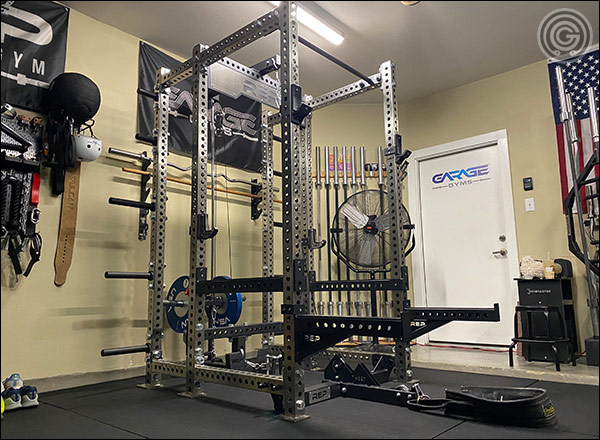
Anyway, in this review I will explain how this accessory works, how easy it is to set up, how it performs, and I’ll go over its pros, cons, and little quirks. I’ll also address some questions I have received regarding the Rep Belt Squat Attachment following the review summary.
Please keep in mind that I’m reviewing this attachment from a PR-5000 perspective. I have no experience with this attachment on a PR-4000.
Belt Squat Attachment Review – Table of Contents
- Brief Description of Belt Squat Attachment
- Installation and Storage
- Functionality / Performance
- Belt Squat Attachment Pros and Cons
- Review Summary
- Answers to Random Questions I’ve Received
Rep Belt Squat Attachment – Quick Rundown
Rep’s Belt Squat Attachment is pretty simple in its design. It consists of a single, ~25″ long, 11-gauge, 3″x3″ steel tube with aluminum pulleys on both ends, a nylon-coated steel cable, and two connecting pieces with fully-welded, right-angle brackets that allow you to connect the accessory to your PR-5000 Power Rack. When installed, the attachment sits directly on the floor inside your power rack.
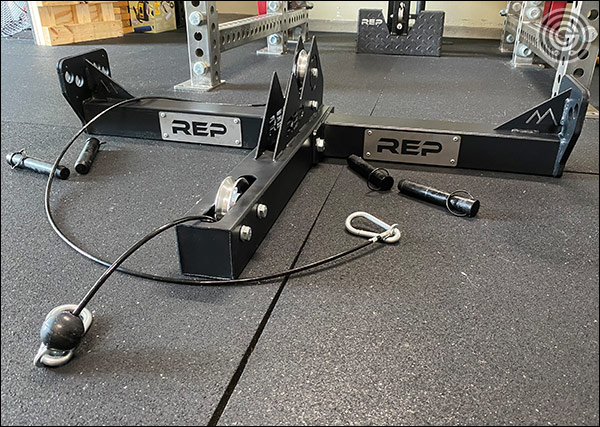
The whole attachment is held in place inside the rack via (4) 1″-diameter metal pins that get pushed through the holes in your low front-to-rear crossmembers, and the attachment itself. The raised pulley in the back is where you connect the attachment’s cable to your lat tower (the high pulley, specifically), and the front pulley is where you’ll attach your belt.
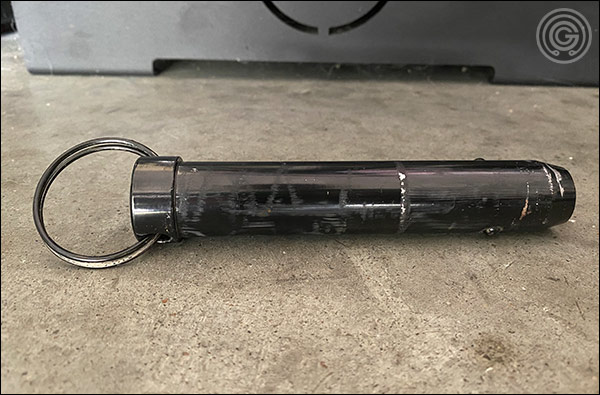
The four metal pins that secure the attachment to the rack are finished in a black zinc. This will help hold rust on the pins at bay for a while, but the process of pushing the pins through the holes of your crossmembers and the attachment will destroy that finish over time. That’s just what happens when you have metal-to-metal contact but I’m still glad the finish is there.
The brackets do sit flush against your low crossmembers when the attachment is installed, but they are UHMW-lined, so you don’t have to worry about damaging your rack’s finish.
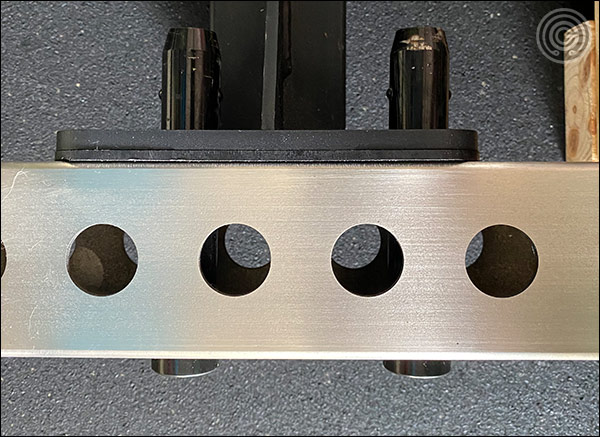
The cable is your standard ¼” braided steel cable and caribiners are included for both ends of that cable. Installation of the two pulleys and that cable are part of the assembly process, as is attaching the two connecting pieces. It’s a pretty straightforward accessory; nothing all that mysterious about it.
Rep Belt Squat Attachment – Installation/Storage
So how simple is it to attach and un-attach Rep’s Belt Squat to your PR-5000? Turns out it is pretty quick and easy. I’d say that it takes about three minutes to drag it into your power rack from where ever you store it in your garage gym and to get it secured to the rack, and about half that time to get it back out of your rack when you’re done using it.
Again, this attachment is secured to the rack with four pins. Just line up the holes on either side of the attachment with the holes on your low crossmembers, slam your pins into place, and then attach the belt squat’s cable to your lat tower. Boom! You’re ready to go.
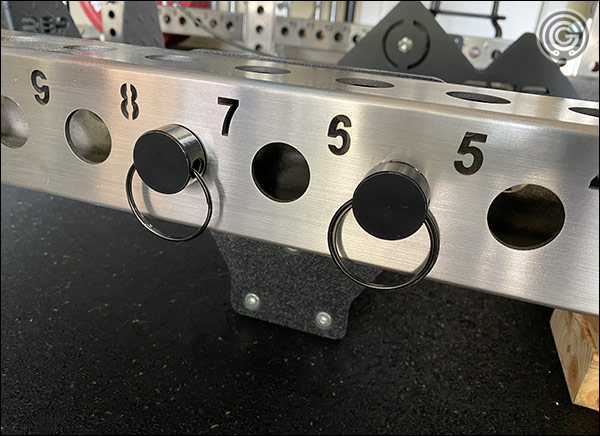
If you’re not patient enough to get down on your hands and knees to get all four holes lined up perfectly before engaging the pins, buy yourself a rubber mallet. The pins are tapered at the end, so really all you need to do is get them mostly lined up, then smack them with your rubber mallet to drive them through. It’ll scratch your pins up quicker, but it’s kinda satisfying to hit stuff with a mallet, I find.
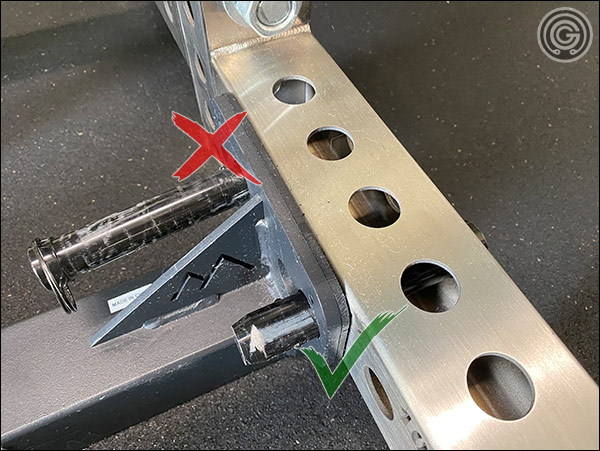
Also, as a additional tip, push the pin through the crossmember first rather than through the attachment first. In other words, push the pins from outside the rack towards the inside and not the other way around. It’s just easier (see above image).
In terms of storage, I just lean mine against the wall to get it out of the way. It takes up very little floor space this way. I’d imagine you could also hang it from a wall rack if you wanted – something like the Fast Track. It’s not that heavy really, so it wouldn’t be too difficult to lift up and on to a couple of sturdy hooks.
When it comes down to it, nobody likes the process of installing or removing an attachment. It’s annoying. But as large attachments go, this one is not so bad. It’s surely not as bad as a rack-mounted GHD or Hyper, or the SquatMax MD.
Rep Belt Squat Attachment – Functionality
So the big question is, “does it work?”
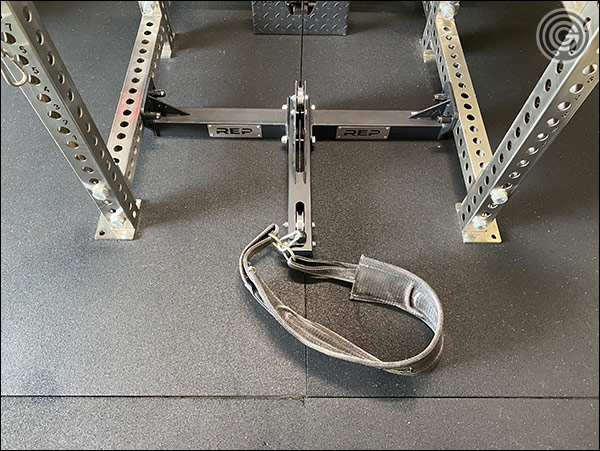
Yes, it does! It works quite well.
Rep’s Belt Squat Attachment is the ultimate, no frills version of the belt squat. It is simple in its design while being functional and effective. The cables flow smoothly through the system with no drag; you can stand anywhere you’d like relative to the pulley with any stance you’d like; you can make it as heavy as you want; and the attachment is extremely affordable.
It’s not all roses though; at least not at first. This attachment has some quirks that require a little bit of tinkering if you want to maximize its effectiveness and ease of use, but luckily, all of these quirks can be dealt with, and when they are addressed you’ve got a fully functional belt squat that costs a whole lot less than any standalone unit.
Let’s talk about what those quirks are so you know what you’re getting yourself into.
Starting From the Hole
The question I get asked the most about Rep’s Belt Squat Attachment is, “do I have to start the set from the hole?”
You can pretty much tell by looking at this attachment that it has no mechanism built in that allows you to lock the weight carriage in a raised position. There’s no latch or lever; there is no Rhino horn. By default, your sets would be starting from the bottom of the lift.
Having said that, there are workarounds for this that will allow you to start your sets from an upright, standing position rather than having to clip in and pull your ass out of the hole each and every set, and I’m going to illustrate one of the ways this is possible.
My Workaround
All I did was take a chain with a caribiner on both ends and attach one end to a band peg that faces away from belt squat attachment, and I clip the other end into the caribiner that attaches the belt squat cable to the lat towers upper cable (see the two images below).
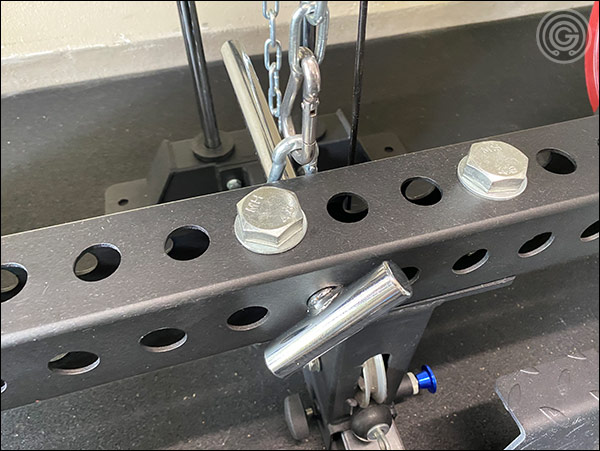
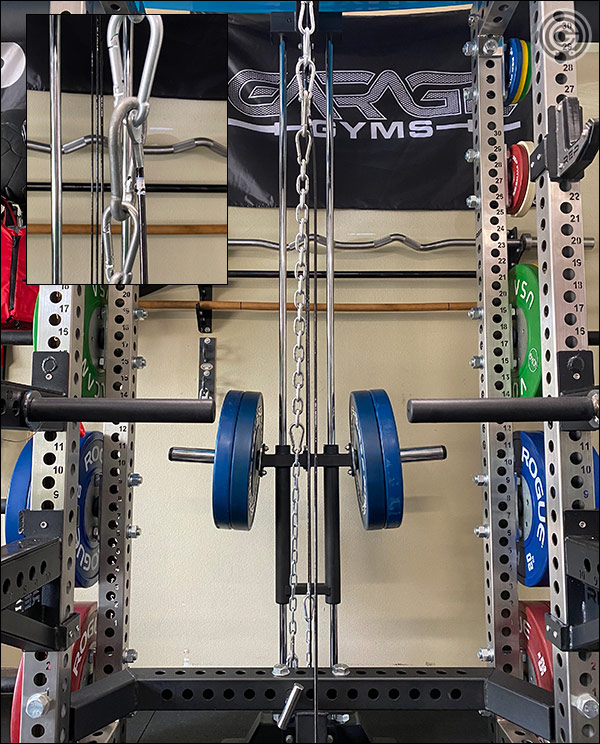
When you’re at the top of the squat and done with your set, you’ll take the end of the chain that’s not attached to the rack via the band peg and you’ll clip it to the lower caribiner of the two that connect the belt squat cable to the lat tower cable. Once you do this, you’ll be able to bend a little at the knees and the chain will pull tight, preventing the carriage from sliding down the rails any further. Now you can unlatch your belt and walk away. When it’s time to do your next set, you only have to bend at the knees a little to latch back in.
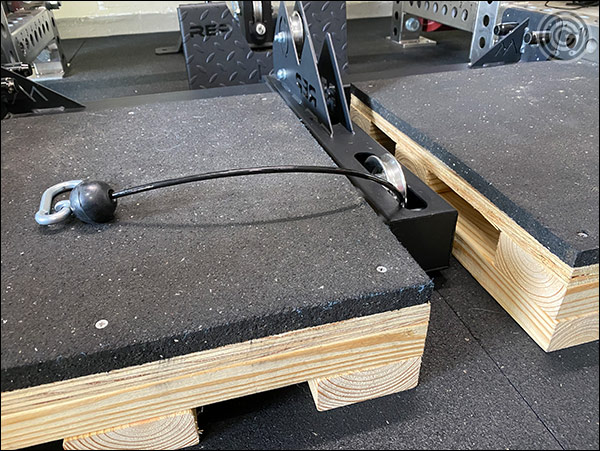
You’ll need to play with the chain length a little. You want it so that you have to stand all the way upright to create enough slack to unlatch the chain. If the chain is still taut when you’re in a full upright position, it can’t be latched or unlatched.
It’s annoying to have to do this, but it’s better than starting each set (especially the heavier sets) in the hole, and at least there are workarounds because, were there not, I do not think this particular attachment would have nearly as much value or appeal.
Have you found a better/easier way to do this? Leave a comment, please. I’m sure we’d all love to hear what you did.
Bottoming out
Dedicated belt squat machines (like the Rogue Rhino) have a raised platform with the cable and the pulley being housed under that platform. With all these components below the floor rather than sitting on the floor, there is a greater distance between your hips and where you clip in to the machine. Greater distance equates to more cable travel, which in turn equates to more depth potential.
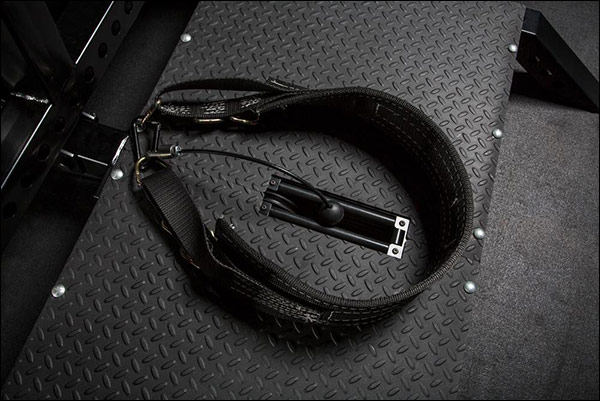
The way that the Rep Belt Squat Attachment is designed with all the hardware sitting on the floor rather than under a platform, there’s a potential problem when it comes to hitting depth since there is less distance for the cable to travel before bottoming out. Depending on your build, the length of your belt squat belt’s chains or straps and your desired squat depth, you may bottom out before you hit proper depth.
So what do you do about this? Well there are two ways to address this. The first is to simply make sure your belt fits you properly and isn’t excessively long. If you don’t have a belt that hangs halfway to the ground when you’re standing straight up, you will not have issues with depth. Let me repeat that before you get all worked up over the second option.. if your belt fits properly and isn’t excessively long, you will not have issues hitting depth.
The other option; which I did before I bothered to test different belts (wah wah); is to build a couple of blocks that go on either side of the attachment’s pulley. Blocks get you further off the ground which basically accomplishes what the platform of a dedicated machine does; it puts the pulley below floor level, creating more distance for the cable to travel. This equates to more depth potential.
Blocks will definitely give you more depth; no doubt about it; but I strongly suggest that you make sure your belt isn’t the problem if you’re actually having issues hitting depth.
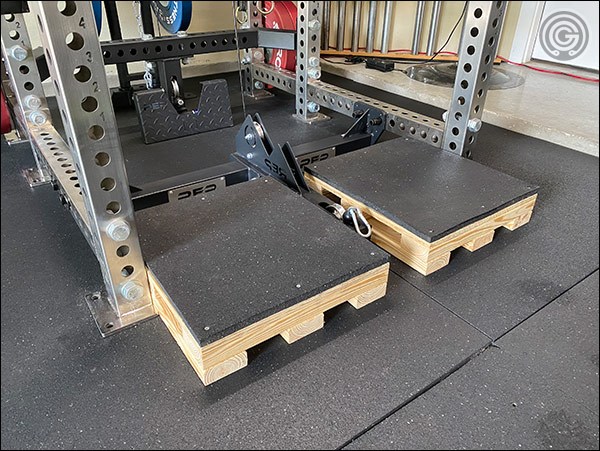
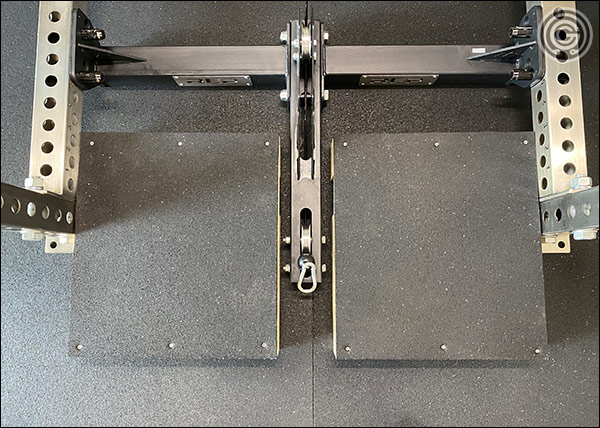
If you don’t own a belt squat belt when you order this attachment (or any belt squat device), I would highly recommend that you order the Spud Inc.Adjustable Belt Squat Belt, not one of the standard-sized belt squat belts. Spud’s standard belt squat belt is amazing, but I’m of the opinion that the regular-sized belt; the one meant to fit most people; is way too long for some belt squat machines; including the Rep Attachment. It’s what I owned originally, and it is what made me think I needed a platform for this type of belt squat machine.
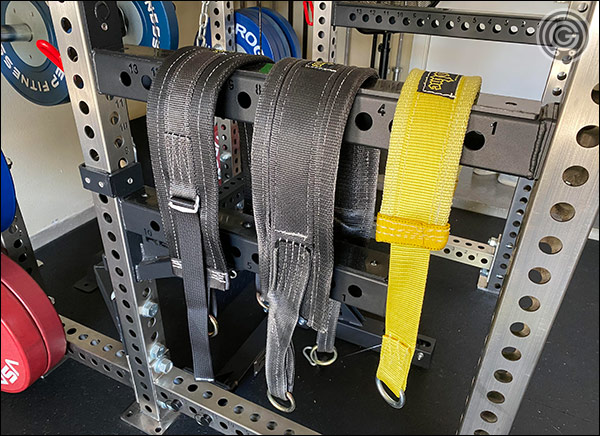
One-size-fits-all belts of any kind are likely to be an issue for all but the thickest and tallest of lifters. If you’re anywhere near average height and build (or smaller), buy a belt that you can adjust to your frame.
Smaller Footprint vs Easy Access
If you don’t have the third row of uprights with plate storage, you can ignore this section, as it doesn’t apply to you.
If you do have the third row of uprights and you have chosen to install your lat tower behind that third row, your clearly have plenty of space in your garage gym, and you too can ignore this section.
However, if you do have the third row of uprights with plate storage and you have chosen to install your lat tower on the middle row of uprights (which you pretty much need to do if you don’t want your power rack to be as long as a crew cab), you’re going to find the process of loading and unloading plates on the lat tower’s carriage to be a real pain in the ass.
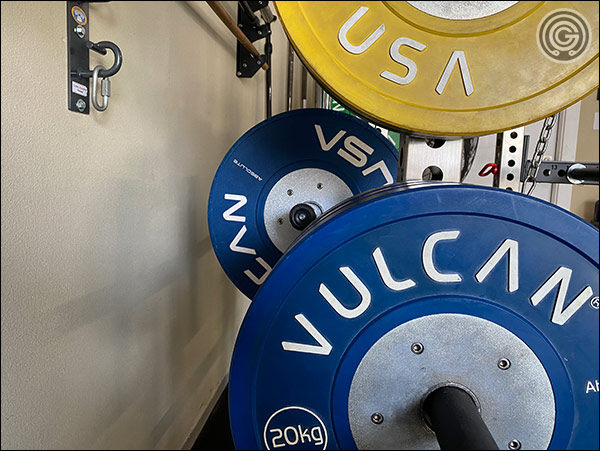
The reason for this is poor positioning of the lat tower’s carriage relative to the rear uprights (and plate storage horns) of the power rack. The carriage is closer to being inside the rack than behind it so there is no real space to maneuver back there. To put that all another way, it’s just really cramped with this installation, and the closer your power rack is to the wall the more cramped it is and the harder it is to get weights on & off that carriage.
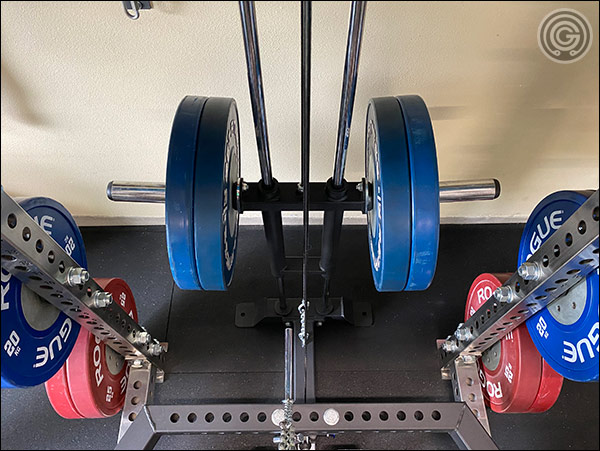
The obvious fix is to move your crossmembers and lat tower one row back, but that’ll make your rack super long. Too long, if you ask me; but it does solve the problem.
The other way to resolve this would be to move your rack an extra foot or so away from the wall so that the carriage can be loaded from the rear rather than the side. This option is not much better than the first, as you still end up consuming lots of space, but it’s still a slightly better option because it still technically requires less floor space.
Rep Belt Squat Attachment – Pros and Cons Summary
Pros
- Well, you sure can’t beat that price. It doesn’t get much better than a belt squat at home for only $279; though to be fair that’s not where the spending ends considering that you need one of only two very specific power racks. Still, its a great price for the attachment itself, and Rep’s racks are priced competitively for sure.
- It works as advertised. That is to say, it gets the job done, and it even does that job well. Rep’s attachment can handle plenty of weight; you can position yourself within the rack anyway you want and with any foot position you’d like; and everything feels smooth; no dragging or catching of the cables.
- Materials and construction are good. The attachment is almost entirely welded, and the components are 11-gauge, 3″x3″ steel just like the rack itself. The pulleys are aluminum rather than plastic, and the two places where the attachment meets the rack are UHMW lined to protect the finish of your lower crossmembers.
- Easy to set up and break back down. Takes mere minutes to get set up in your rack and even less time to get it back out.
- Takes up very little precious floor space when not in use. You can simply lean it against a wall, and you’re looking at about 2 square feet of floor space being consumed.
- Very versatile machine that allows for more than just belt squats; things like lunges and Bulgarian split squats, various rows, deadlift, RDLs, weighted pull-ups, curls (of course) and many more.
- By using Rep’s Utility Horns or even band pegs in the uprights, your belt squat now has handles like a standalone belt squat machine. If you own lever handles, you could even use those too.
Cons
- Use of this accessory requires you to own a very specific power rack and that rack’s lat tower attachment; a heavy investment all told.
- Lacks the bells and whistles of a standalone belt squat. Requires some tinkering to set it up in a way that allows you to start sets from the top of the lift.
- The placement of the lat tower inside some rack configurations makes the loading and unloading of plates quite difficult. The workaround to this problem involves you commit-ing more space to the rack; which is going to be less than ideal for most people. This is easily my biggest problem with this set-up btw, and it’s interesting that my biggest issue is with a completely different, yet completely-required attachment.
Rep Belt Squat Attachment – Review Summary
Let’s face it, a standalone belt squat machine would be ideal in pretty much every way. I’m sure I wouldn’t get much in the way of argument from you on that.
Well, we don’t all have the money for that though, and even many of you who do don’t have the necessary space. Hell, a Rogue Rhino is about $2000 shipped, and the Pit Shark starts at $3400, and both take up a boatload of precious gym square footage. Even economy belt squat machines like the B.o.S. Belt Squat will cost you two to three times as much as a Rep attachment and would still require 20+ square feet of permanent floor space.
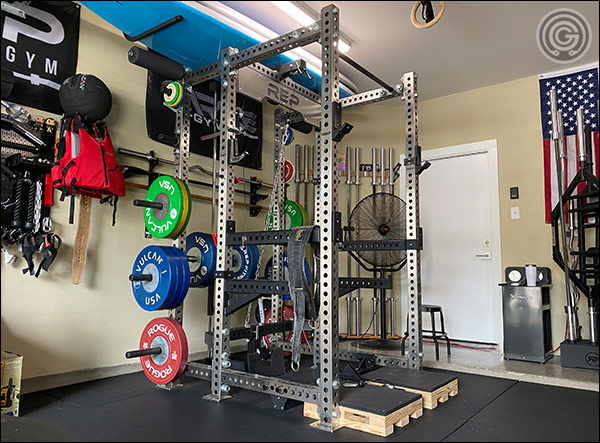
If you are someone who lacks either the space or the necessary funds for a standalone belt squat machine (or both?) and you own a PR-5000 or the PR-4000 Power Rack (or intend to buy one, then I think you can definitely be more than happy with Rep’s Belt Squat.
Yes, controlling the carriage height so that you don’t have to start your sets from the bottom requires tinkering, and yes, it is a rack attachment, so it does need to be set up for use and then removed when it’s not in use, but it works very well, requires very little floor space, and it’s affordable. And if ever you end up somewhere with a bigger garage, or you find that you have more cash to throw at equipment, by all means, grab a Rhino or something.
Personally, I think that it’s a solid product. I have used the hell out of this attachment since I got it a couple months ago. No bullshit either. I absolutely love having access to belt squats, and I love that I don’t need to commit 20-25 square feet of space to a dedicated machine or have to stand on pulling blocks with a loading pin hanging between my legs. I look forward to training days that include belt squats, or days that could include them!
And seriously, it’s really not enough to just have any belt squat solution. I wouldn’t care for this attachment if it didn’t work, or it did a shitty job. If it had even one or two shortcomings that had no workaround I wouldn’t be sitting here and telling you I like it. If it was genuinely crap, I would have done a quick review within a couple weeks, sold it, and started figuring out where I was going to get a better solution.
So yes, I like it. I’ll get a standalone machine one of these days. I do want one. But at least I don’t feel a sense of urgency around that now; thanks to this attachment.
Random Instagram Questions I’ve Received
Is this thing good for any other exercises?
It is! You can do lunges and split squats, rows, deadlifts, dips, curls, and all sorts of random ‘off the floor’ exercises. You probably don’t need a belt squat attachment to do any of these movements considering that you own a full-sized power rack with a lat tower, and I can only assume a bar with plenty of weights, but you most certainly can. This attachment combined with your lat tower offers up a boatload of versatility.
Seriously, there is no shortage of things you can do with this attachment. Me, I am all about the belt squats, but I’ve been known to do some calf raises and Bulgarian split squats from time to time just because I can and because they feel different with the cable. But honestly I would want this attachment even if the only movement I could do was the belt squats, so all of the other stuff is just a bonus to me.
Would you intentionally buy a PR-x000 for this attachment?
I do not think there is a single attachment out there that’s so amazing that I would center my entire set-up around it. Way, way more needs to be taken into consideration when choosing a power rack; much more than a single attachment.
That said, if one or both of the compatible Rep PR racks is already on your short list and all other needs and wants are being met (as in, all other things are equal) – then sure, why not go with one with a belt squat.
Why the high cable, and not the low?
Because of where Rep’s Belt Squat Attachment is installed inside the rack, it is too close to the low cable to be used. You get almost no cable travel; certainly not enough to perform a rep. Whereas the distance from the attachment to the top cable is approximately 7-ft, which obviously allows for plenty of distance for the cable to travel.
What about handles?
Buy a a pair of Rep’s Utility Horns, They can attach to any hole of your uprights, safeties, or crossmembers. They are 2″ diameter, long, rubber coated, and they make great handles for your belt squats.
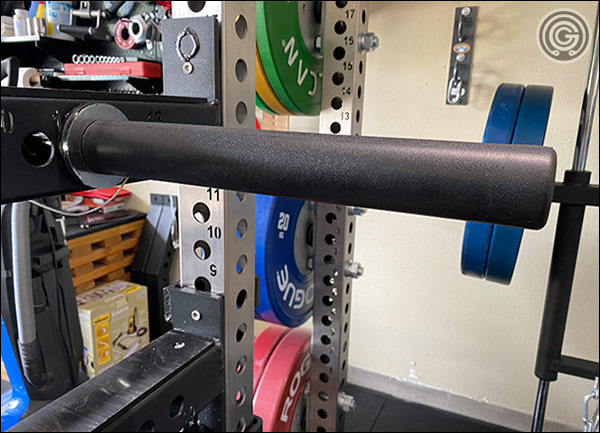
Band pegs can also be used, and I’ve tried that as well, but these Utility Horns just seem to make a better handle because of the larger diameter and rubber coating. They’re so useful for other things too that I’d almost recommend them whether you have a belt squat or not.
I sold my dip station after getting a pair of utility horns because I hated having that massive attachment lying on the floor when not in use. Also, you can customize the handle distance when you use utility horns for dips (you must own the flip-down safeties to do dips though.) You can also Utility Horns for storage – chains, bands, belts, plates, etc.
Does it matter where on the floor the attachment is installed?
It does not seem to matter. I’ve had it towards the back, towards the front, and everywhere else in-between. I personally prefer it more to the rear so I can use my Utility Horn’s on the uprights rather than in the safety spotters (easier to move the horns than the spotters).
Is this compatible with other, non-Rep power racks?
This attachment is definitely not compatible with a Rogue Monster Rack simply because the racks are different dimensions (Rogue racks are 2″ wider). The rear, low crossmember isn’t long enough for a Rogue rack and Rogue doesn’t offer an alternative component that would be compatible. Even if you could somehow extend Rep’s crossmember for your Rogue rack (or make your own), you still have many other components to retrofit.
I would actually assume zero cross-compatibility with this attachment unless you know your way around a cutting torch, grinder, and welder.
How did you make your blocks?
My blocks were super easy to make. It’s just two, alternating rows of (3) 2x4s with a single layer of 3/4″ plywood topped with a piece of 3/4″ stall mat.
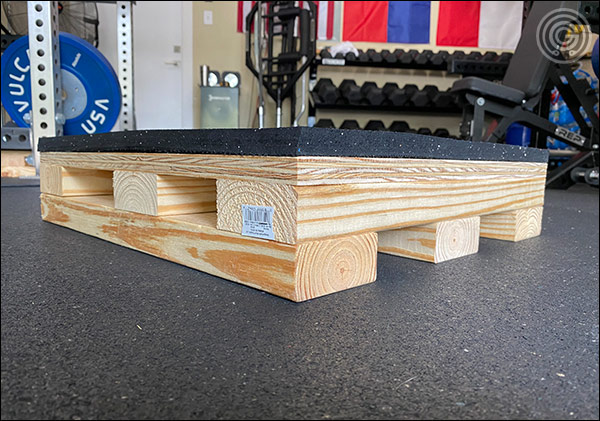
You can make the platform of each block as little or as big as you want, just as long as they are not wider than the space between the center post of the belt squat attachment and the frame of your rack.
Of course, your new blocks can also be used for block pulls, and there’s nothing wrong with that!

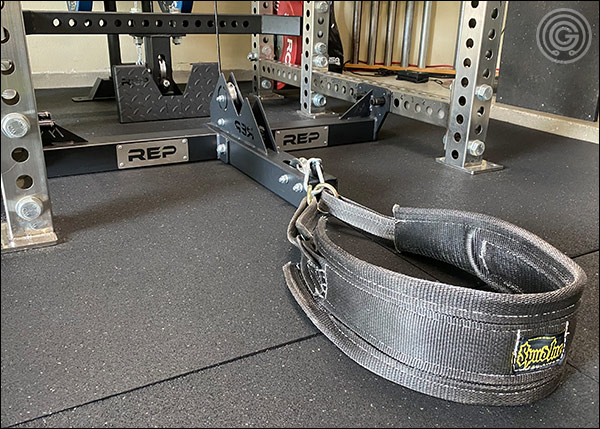
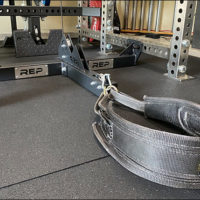

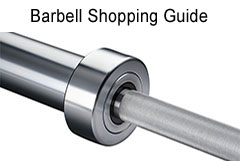
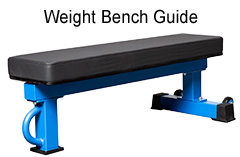
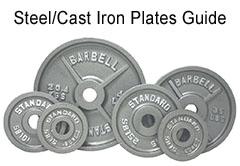
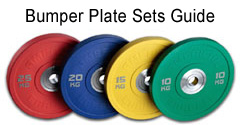
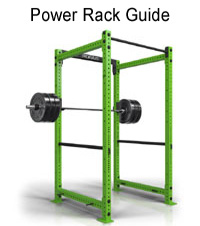
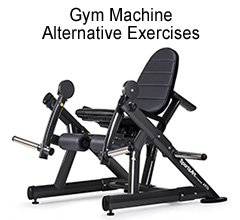



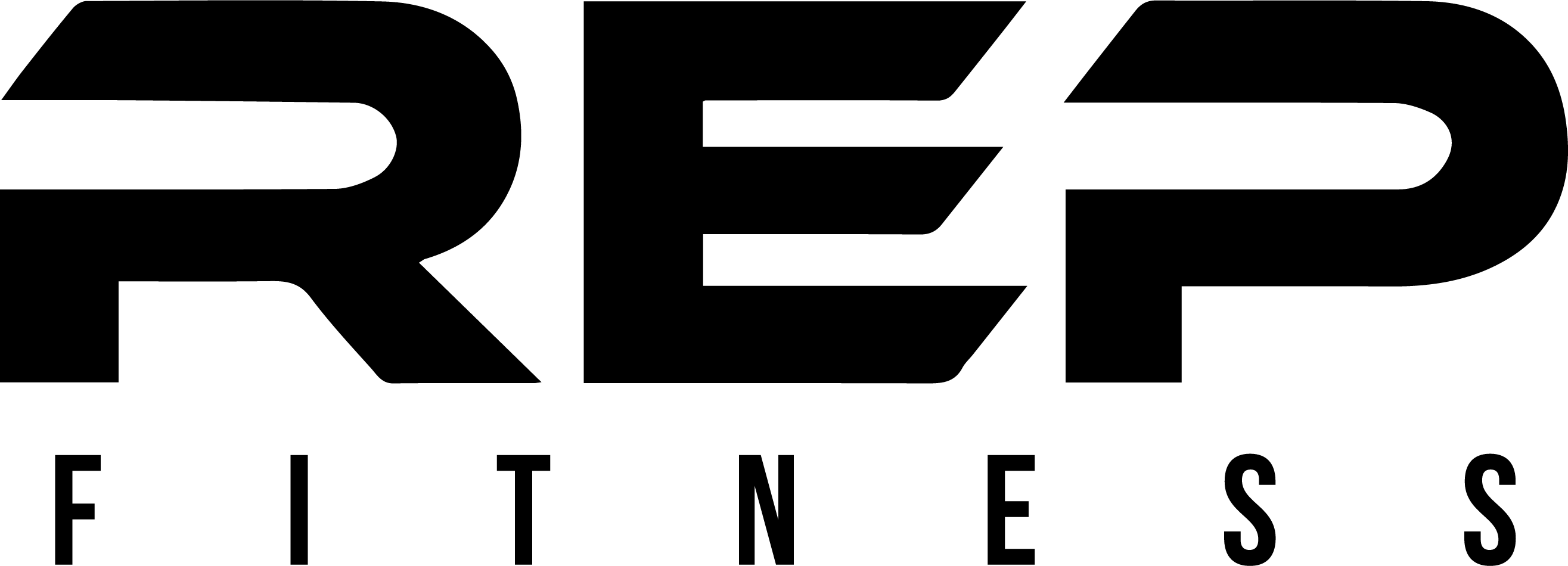
Excellent review! (as usual)
I shared it with 12,000+ members of my Facebook Group
All the best!
I appreciate that. Thank you, Marc.
How does the weight on the belt squat compare to back squatting? For example does the same weight feel lighter on the belt squat than it would on a bar?
I think it feels heavier on the belt squat than it does on the bar, and by quite a bit, and thank goodness for that because loading 400 pounds on that carriage would suck
Excellent reviews as always man! Very detailed and you explain each section well. If I owned this rack I might consider buying this, but I’m very happy with the belt squat I built inside my Rogue HR2 rack. I’m also jealous that you have not one, but THREE belt squat belts haha. I have the regular Spud Inc. belt squat belt. It fits very well. I would probably purchase the adjustable one but since the one I have fits me well, there is no immediate need. Great job on the review man!!!
Thanks again, Tony. Well, to be fair, I can’t use the small yellow one. I bought that for a friend who uses my gym a couple times a week who is too small of a guy for the standard-sized Spud. And I picked up the adjustable to get an idea of how much I really would need blocks if I could make the belt fit properly, and turns out I wouldn’t have needed them at all.
So this thing builds off the lat attachment for the rack. According to the web site, the lat attachment for the PR-4000 has a max load of only 350lbs. Does this belt squat attachment make the weight feel heavier than it actually is? Because it would seem to be difficult to load it with adequate amounts of weight if you’re a serious lifter.
It does actually. But you’re still right – if you’re looking to belt squat in the big leagues, you need a Rhino or Shark.
Great review! I was getting a bit worried with the long silence given the current situation, glad to see you’re still here!
haha thank you, I appreciate that. Yeah I’m still here. =p
Great review. Looking forward to setting my belt attachment up soon and using your tips and tricks. Here’s a question unrelated to the belt: would you recommend making a dip station out of two utility horns rather than Rep’s dip attachment for the PR5000? Seems like a pair of utility horns can be more useful for other stuff too plus you can separate them as close or far as you want but it requires the flip down safeties.
You’re exactly right, and I sold my dip station when I received the utility horns.
After almost another year has passed …. are you still a fan? I could easily add this to a palate that is soon on it’s way from REP.
I did not see this one! My apologies.
I loved having access to belt squats so much that I upgraded to a Rhino. The REP attachment is a great and affordable way to get access and it definitely got the job done, but I was also pretty excited to have a standalone unit that didn’t require so much tinkering (taking the attachment on and off the rack.) If it were my only option, I’d re-purchase, but I am grateful I was able to upgrade.
Thank you for the information.